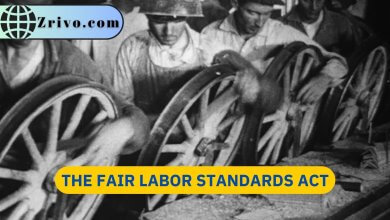403(b) Plans
The 403(b) plan stands out as a valuable and distinctive option among the many retirement plans. This article will tell you much about 403(b) plans, exploring their eligibility criteria, the application process, notable features, and why individuals might choose them over other retirement plans.

A 403(b) plan, also known as a tax-sheltered annuity (TSA) plan, is a retirement savings vehicle available to employees of certain tax-exempt organizations, including educational institutions, hospitals, and nonprofit organizations. Like 401(k) plans, 403(b) plans allow employees to contribute a portion of their salary pre-tax, meaning the contributions are deducted from their income before taxes are applied. Eligibility for a 403(b) plan is typically limited to qualifying organization employees. This includes teachers, professors, administrators, healthcare professionals, ministers, and employees of nonprofit organizations. Generally, you should have access to a 403(b) plan if you work for an eligible organization.
How to Apply for a 403(b) Plan?
You need to follow a few steps to apply for a 403(b) plan.
- Firstly, check with your employer or human resources department to confirm if they offer a 403(b) plan. If they do, request the necessary enrollment forms and plan documents.
- Review these materials carefully to understand the contribution options, investment choices, and any employer matching programs.
- Complete the required forms specifying the contribution amount and investment selections, and submit them to the plan administrator or the designated provider.
- They will guide you through the process and set up your 403(b) account.

What Does a 403(b) Plan Offer?
403(b) plans offer several notable features that make them attractive to individuals seeking retirement savings options. Here are some key features of 403(b) plans:
- Contributions to a 403(b) plan are made on a pre-tax basis, which means they are deducted from your income before taxes are calculated. This reduces your taxable income in the year of contribution, potentially lowering your tax liability.
- Like 401(k) plans, 403(b) plans have higher contribution limits compared to Individual Retirement Accounts (IRAs). In 2024, the maximum annual contribution limit for a 403(b) plan is $19,500, allowing individuals to save more for retirement.
- Many employers that offer 403(b) plans provide matching contributions. This means that for every dollar you contribute, your employer may match a portion or all of it. Employer matching is essentially free money that boosts your retirement savings.
- Individuals aged 50 or older are eligible to make additional catch-up contributions to their 403(b) plans. In 2024, the catch-up limit is $6,500, providing an opportunity to accelerate retirement savings as you approach retirement age.
- 403(b) plans typically offer a range of investment options, including mutual funds, annuities, and sometimes employer stock. This allows participants to choose investment vehicles that align with their risk tolerance and investment goals.
- Some 403(b) plans allow participants to take out loans from their account balance for certain financial needs, such as a down payment on a home or education expenses. It’s important to review the loan terms and consider the potential impact on long-term retirement savings before opting for a loan.

Disadvantages of 403(b) Plans
- Compared to other retirement plans, 403(b) plans may have fewer investment options available, which can limit diversification and flexibility.
- Some 403(b) plans may have higher administrative and investment fees compared to other retirement plans, potentially impacting long-term returns.
- Some 403(b) plans may have strict rules and limitations on when and how withdrawals can be made. This lack of flexibility can restrict individuals’ access to their retirement savings when needed.
- Unlike certain retirement plans, 403(b) plans may have limited portability, making transferring funds to another retirement account challenging if you change employers or leave the tax-exempt organization.
- With multiple providers and investment options available within 403(b) plans, selecting the most suitable option can be complex and overwhelming, especially for individuals without much financial knowledge or experience.
- Employees who have worked for a tax-exempt organization for a long time may face lower contribution limits due to the “15-year rule.” This rule allows individuals with at least 15 years of service to contribute up to $3,000 more per year, but it may still be lower than other retirement plans’ standard contribution limits.
- While some employers offer matching contributions in 403(b) plans, not all tax-exempt organizations provide this benefit. Without an employer match, individuals may miss out on potential additional contributions that can significantly boost their retirement savings.





